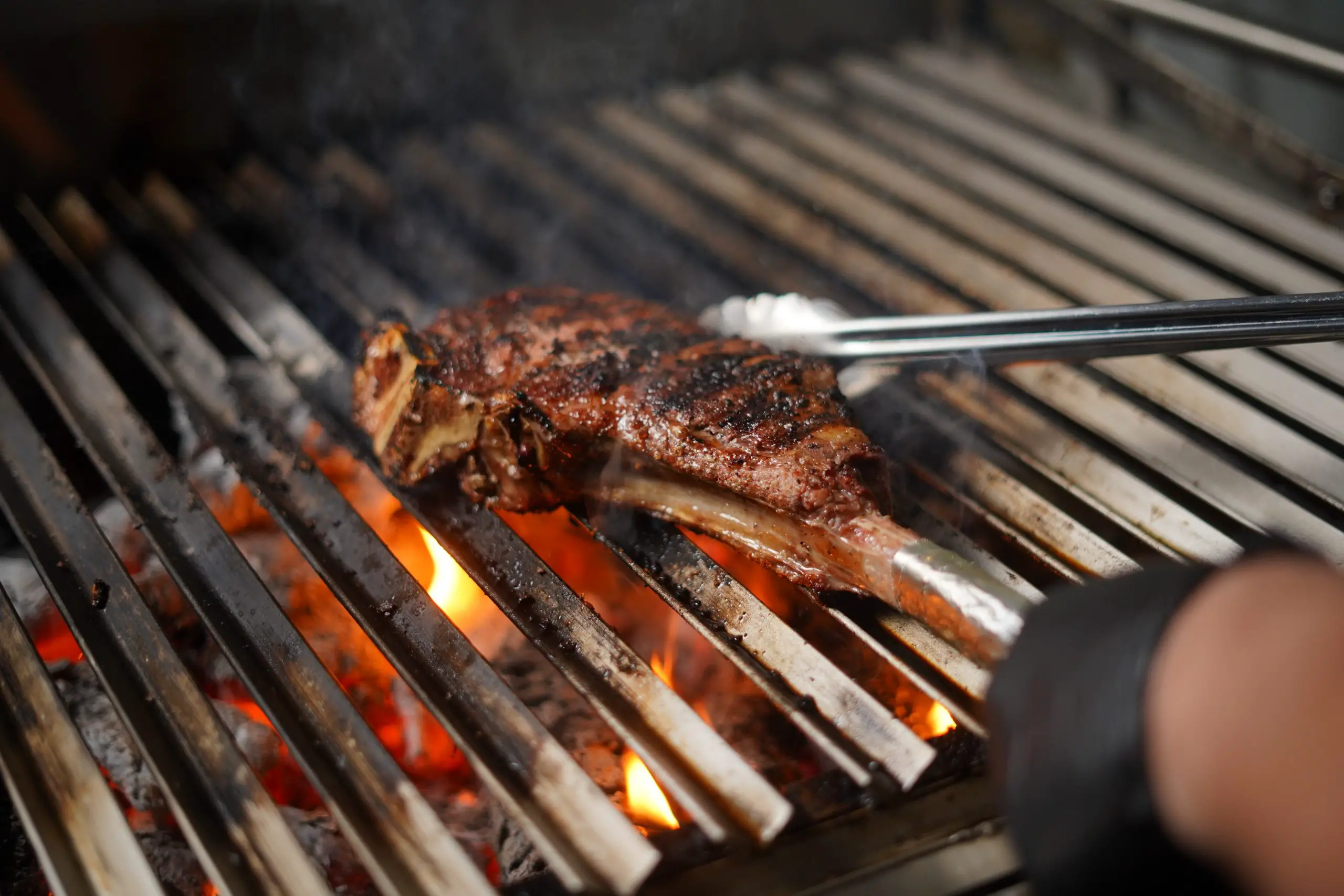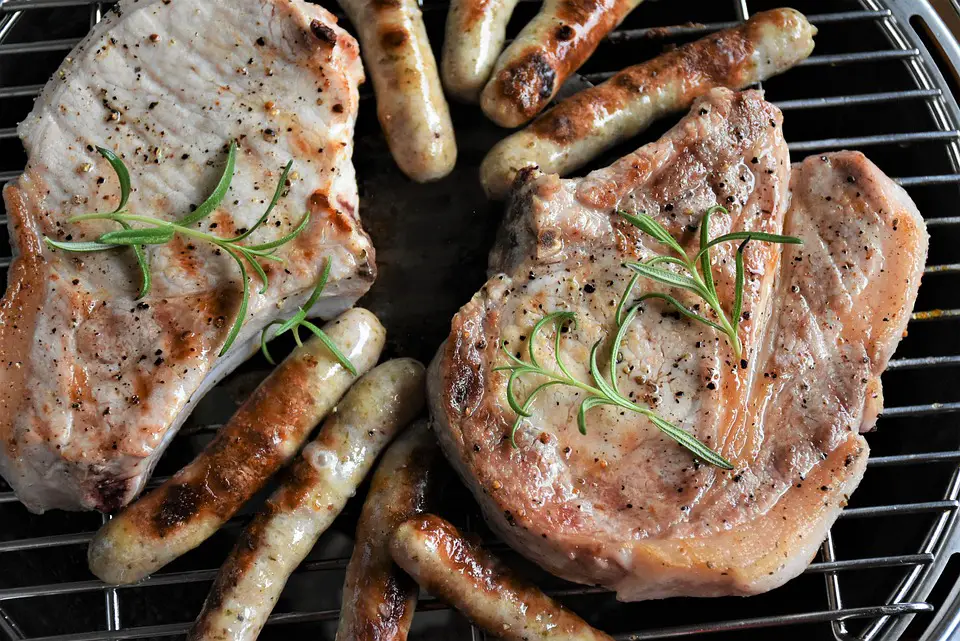You’ve just finished preparing a mouthwatering pork dinner, and you’re now eyeing the leftovers. You can take it again at your next meal. Reheat and serve with some of your preferred sauce. There are a few things to keep in mind, though.
First, properly cooked pork will remain juicy and tasty when reheated. Meat that has been incorrectly prepared may be rough and dry.
If you are thinking about reheating your pork, you have come to the right place. The key is to keep the meat moist, slice it well, and add a sauce for a flavorful dish. After you are finished reheating your pork, make sure to store it properly. We have some tips to ensure you reheat your pork safely.

What is Pork?
Pork is the domestic pig’s meat (Sus domesticus).
It is the world’s most widely consumed red meat, especially in eastern Asia. However, several religions, including Islam and Judaism, restrict their ingestion.
Because of this, pork is prohibited in many Islamic nations.
Pork is frequently consumed raw, but cured (preserved) pork items are also widely available. These consist of sausages, ham, bacon, and smoked pork.
Lean pork is a great addition to a balanced diet because it is strong in protein and contains vitamins and minerals.
Is it Safe to Reheat Pork?
Is it Safe to Reheat Pork? Yes, it is the answer. Pork may be easily reheated to help you enjoy any leftovers from your favorite dinners. The parts’ proper placement in storage is the only thing that needs to be kept in mind. Please do not leave them at room temperature for longer than two hours to keep them safe to consume later. Instead, put the leftovers straight into the refrigerator. The meat will keep for three to four days in this manner. Reheat the beef during this period, then consume it.
How to Reheat Pork?
In the Oven
- Step 1: Warm the oven up
Set your oven’s temperature to at least 325 degrees.
- Step 2: Add the meat to the pan
Put the chunks of pork roast you wish to reheat in a dish or pan that can go in the oven, like a metal pan, with a maximum depth of 2 inches.
As a result, the meat can reheat more quickly and spend less time at a temperature where bacteria can start to grow.
- Step 3: Insert the pan into the oven
Set the pan or dish inside the preheated oven.
- Step 4: Cook the meat
Before removing the meat to check its internal temperature, give it around 20 minutes to cook.
- Step 5: Check the temperature
The thickest area of the reheated pork should be where a meat thermometer is inserted. The USDA Food Safety and Inspection Service recommend reheating meat to an internal temperature of 165 degrees Fahrenheit for pork roast and other forms of meat.
In the Microwave
- Step 1: Place in the microwave.
Pork roast pieces should be placed in a dish that can be microwaved and covered.
- Step 2: Prepare for 5 minutes.
Cook the pork in the microwave for approximately five minutes. Use the warming mode on your microwave if at all possible.
- Step 3: Heat to a Safe Temperature
Check to see if the meat has achieved an internal temperature of 165 degrees Fahrenheit by inserting a meat thermometer into the thickest portion of the animal.
If necessary, continue warming the pork for increments of two to three minutes while monitoring the temperature each time.
Some Additional Tips:
After reheating, use low heat, cook gradually, and deglaze the pan with some liquid (water, broth, etc.). It keeps the meat wet and keeps it from drying out.
Pork should be reheated to an internal temperature of 165 degrees Fahrenheit, then rest for three minutes before serving, advises the USDA (Food Safety and Inspection Service).
Before consuming your pork, check the internal temperature with a food thermometer.
When reheating pork cooked in a sauce or gravy, bring the sauce or gravy to a boil first before reincorporating the pork. It aids in eradicating any dangerous microorganisms that might have been present in raw meat.
What is the Correct Method of Freezing Pork?
Always remove as much air from a freezer bag or other airtight container before freezing.
Keep food-safe plastic between layers of steak, chops, or other large things when storing them, or wrap each item separately and place it in a separate bag. This facilitates defrosting and guards against freezer burn.
Pork can be kept for up to 6 months, depending on how it is stored and packed.
Before using, frozen pork should be thawed.
When feasible, defrost pork slowly in the refrigerator for 24–48 hours before cooking.
Never let warm water or the sun thaw frozen meat. Microwave defrosting is the most secure technique when an immediate thawing is needed.
How to Buy Perfect Pork?
A pinkish-red tint for the pork will make for a better eating experience.
Selecting meat that is liquid-packed and has a pale color is not recommended.
Search for pork with marbling or tiny bits of fat. The flavor is added via marbling.
Any meat with a dark-colored bone should be avoided.
Pork should have white fat that is free of any black dots.
Pork is typically served with 3 ounces of cooked meat per serving. To make 3 ounces of cooked pork, start with 4 ounces of boneless, raw pork. A deck of cards has about the same thickness as a 3-ounce serving.
What are the Different Cuts of Pork?
The pig parts humans eat as food are known as “cuts of pork.” Each cut has a different name and size depending on the country. The pig is first sliced into four to six primal cuts, or the major parts: shoulder (blade and fillet), loin, belly (spare ribs and side), and leg. These and other pig parts with less flesh, such as the head, foot, and tail, are frequently sold in bulk. Retail cuts are the particular cuts utilized to obtain various types of meat, like tenderloin and ham. At least 25 different Iberian pork cuts are available, including jamón.
Some of the Popular Cuts Include:
Head
Brawn, stocks, and soups can all be made from the pig’s head. The ears can be boiled, fried, or baked to be consumed separately. The cheeks can be prepared into jowls, known in Spanish-speaking nations as carrillada or carrileja, by curing and smoking them.
Shoulder Blade
The shoulder blade is located behind the head and above the front limbs. It can either be cured as “collar bacon” or boned out and coiled up as a roasting joint. It should not be confused with the rack of spare ribs from the front belly, often referred to as a spare rib roast or joint.
Loin
Back bacon or Canadian-style bacon can be cured from the loin. The loin and belly can be cured together to make a side of bacon. The loin can also be separated into ribs (also known as baby back ribs or riblets), pork cutlets, pork chops, and roasts (blade loin roasts, center loin roasts, and sirloin roasts come from the front, center, or rear of the loin) (chuletas).
How to Know if Pork is Bad?
You now know what causes a perfectly delicious piece of fresh pork to be ruined. But it takes time for all of these things. Even worse is when flesh starts to spoil. Let me demonstrate how you can detect whether your meat is beginning to spoil.
Smell
Fresh pork should not smell strong but rather have a somewhat metallic scent from the pig’s blood circulation. If you smell an ammonia-like, revolting stench or decay, your pork has reached the end of its shelf life.
Slime
Similar to how it looks, fresh pork doesn’t have a sticky texture; instead, it has a slightly damp sensation. One of the reasons you should is that you should always handpick your pork to ensure that it has no funky slime.
Texture
A fresh slice of pork has a hard but soft texture, similar to a relaxed muscle. Fresh pork should not have traces of your poke or indentations in the area where you touched it. Don’t purchase anything if it is so squishy that you could dent it.
Don’t buy anything so soft that you can make a dent.
Color
Consider a reddish lip color when describing the color. The blood still presents in the flesh will begin to oxidize and turn brownish-grey if the pig is left out for an extended period. If it is properly stored, a fresh slice of pork should appear like that.
What are the Side Effects of Consuming Pork?
Toxins
How well-versed are you in the pig’s anatomy? How does it work? Did you know that pigs, particularly those grown in factory farms, have major digestive tract issues? Pigs digest food in 3 to 4 hours, compared to up to 24 hours for cows. Numerous poisons are left in the pig’s body due to this digestive system’s relatively short work, and people who eat this meat also consume those toxins.
Parasites
It has been demonstrated that pigs have a wide range of harmful parasites. Even after the meat has been cooked properly, some parasites remain. People who consume infected pork might get the dangerous infection trichinellosis, sometimes known as trichinosis. These parasites can thrive and multiply inside the human body and frequently result in various health problems, such as a protracted fever, excruciating muscle pain, swelling of the face or eyelids, cramps in the abdomen, diarrhea, nausea, and extreme weakness.
Antibiotics
According to the data, severe diseases like pneumonia affect more than 70% of pigs produced on factory farms. Nearly every pig is affected by dreadful conditions, inadequate diet, and cruel treatment, and if producers didn’t use antibiotics, they would all perish within a few days. They abuse it, in my opinion, to prolong the lives of sick pigs.
Conclusion
It is safe to reheat the pork. Whether you’re looking to reheat roasted or smoked meat, it’s important to do it right. Reheating lean meats can quickly dry out, and repeated attempts can wear down the meat’s integrity. Fortunately, there are several ways to reheat your meat without risking overcooking.
While many methods are available, one of the best is to slice your meat first. A good meat slicer can make the process easy. You can cook the sliced meat in a pan containing a little neutral oil. It should take about 15 minutes.

